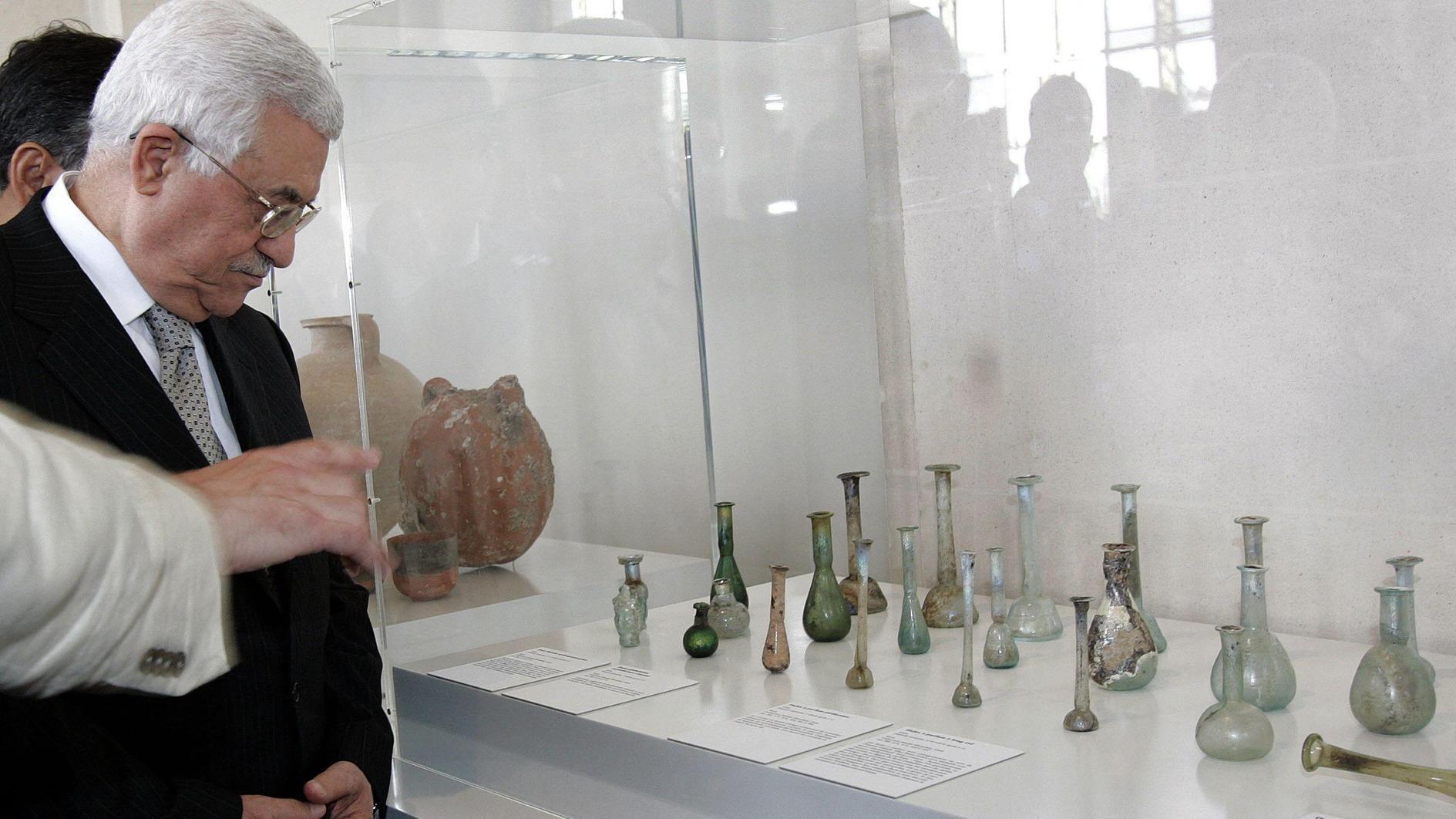
Some of Gaza’s greatest historical treasures are safe in a warehouse in Switzerland for the past 16 years thanks to the blockade and the red tape that delayed their return.
Gaza's ancient Greek site of Anthedon has been bombed, its "Napoleon's Palace" destroyed and the only private museum burned down: The war has taken a terrible toll on the rich heritage of the Palestinian territory.
But in a strange twist of fate, some of its greatest historical treasures are safe in a warehouse in Switzerland. And ironically, it is all thanks to the blockade that made life in the Gaza Strip such a struggle for the past 16 years.
Based on satellite images, the UN cultural organization reckons some 41 historic sites have been damaged since Israel began pounding the besieged territory after the Oct. 7 Hamas attack.
On the ground, Palestinian archaeologist Fadel al-Otol keeps tabs on the destruction in real time. When he has electricity and internet access, photos pour into a WhatsApp group he set up with 40 or so young peers he mobilized to watch over the territory's vast array of ancient sites and monuments.
As a teenager in the 1990s, Otol was hired by European archaeological missions before going on to study in Switzerland and at the Louvre Museum in Paris.
"All the archaeological remains in the north have been hit," he told AFP by phone from Gaza.
"Blakhiya [the ancient Greek city of Anthedon] was directly bombed. There's a huge hole," said Otol. He said part of the site, near a Hamas barracks where "we hadn't started excavating," was hit.
The 13th-century Al-Basha palace in Gaza City's old town "has been completely destroyed. There was bombing and it was bulldozed. "It held hundreds of ancient objects and magnificent sarcophagi," Otol added as he shared recent photos of the ruins.
Napoleon is said to have based himself in the ochre stone edifice at the disastrous end of his Egyptian campaign in 1799. The room where the French emperor supposedly slept was full of Byzantine artifacts.
"Our best finds were displayed in the Basha," Jean-Baptiste Humbert of the French Biblical and Archaeological School in Jerusalem (EBAF) told AFP. But we know little of their fate, he said. "Did someone remove the objects before blowing the building up?"
Ancient crossroads
The only sheltered natural harbor between the Sinai and Lebanon, Gaza has been for centuries a crossroads of civilizations. A pivot point between Africa and Asia and a hub of the incense trade, it was coveted by the Egyptians, Persians, Greeks, Romans and Ottomans.
A key figure in excavating this glorious past over the last few decades has been Jawdat Khoudary, a Gazan construction magnate and collector.
Gaza, with its "seafront real estate," had a property boom in the 1990s after the Oslo peace accords and the creation of the Palestinian Authority.
When building workers dug up the soil, they came across lots and lots of ancient objects. Khoudary amassed a treasure trove of artifacts that he opened up to foreign archaeologists.
Marc-Andre Haldimann, then curator of MAH, Geneva's art and history museum, couldn't believe his eyes when he was invited to have a look around the garden of Khoudary's mansion in 2004.
"We found ourselves in front of 4,000 objects, including an avenue of Byzantine columns," he told AFP.
Quickly an idea took shape to organize a major exhibition to highlight Gaza's past at the MAH, and then to build a museum in the territory itself so that the Palestinians could take ownership of their own heritage.
At the end of 2006, around 260 objects from the Khoudary collection left Gaza for Geneva, with some later going on to be part of another hit show at the Institut du Monde Arabe (IMA) in Paris. But geopolitics changed along the way. In June 2007, Hamas drove the Palestinian Authority from Gaza. And Israel imposed its blockade.
As a result, the Gazan artifacts could no longer return home and remained stuck in Geneva, while the archaeological museum project fizzled out.
But Khoudary did not give up hope. He built a museum-hotel called Al-Mathaf, museum in Arabic, on the Mediterranean coast north of Gaza City. But then came the Israeli ground offensive after the Hamas attack on Oct. 7, which began in Gaza's north.
While part of Khoudary's collection has been lost, the treasures held in Switzerland remain intact, saved by the blockade and the red tape that delayed their return.
"There were 106 crates ready to go" for years, said Beatrice Blandin, the MAH museum's current curator.
Safely far from the war raging in Gaza, "the objects are in good condition," she added. "We restored some of the bronze pieces that were slightly corroded and repacked everything.
"We just had to be sure that the convoy would not be blocked," she told AFP. "We were waiting for that green light."
But with any return impossible for the moment, Blandin said "discussions are under way" for a new Gaza exhibition in Switzerland.
Khoudary is excited by the idea. "The most important collection of objects on the history of Gaza is in Geneva. If there is a new show, it will allow the whole world to learn about our history," he said.